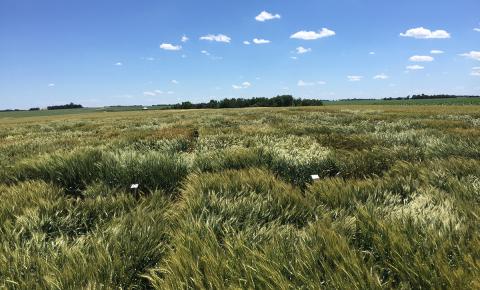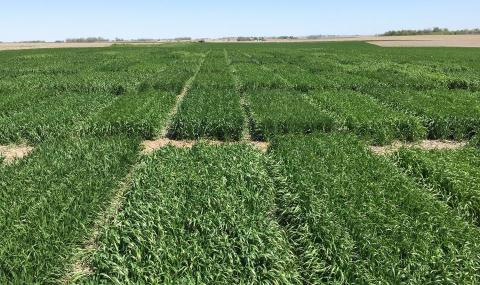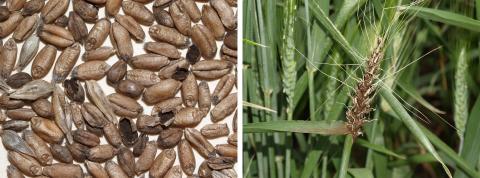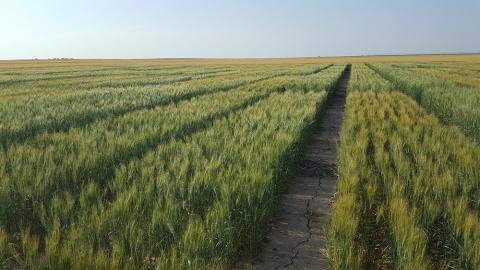Soybean Harvest at 90%; Corn at 65%
November 5, 2018
By late Sunday, 65% of Nebraska's corn had been harvested, equal to last year, and behind 72% for the five-year average. Soybean harvest was 90% done, near 94% last year, and behind the five-year average of 96%.
Q&A: How Can I Control Winter Annuals Now Before Planting Wheat?
October 24, 2018
What is your herbicide recommendation for someone who wants to plant wheat, but has a lot of winter annuals coming up, including marestail?
Winter Wheat Varieties with an Eastern Nebraska Fit
September 27, 2018
Winter wheat growers in eastern Nebraska will want to check out the newer winter wheat varieties described here as well as a table of comparable traits to aid in selecting a variety best suited for their operation.
CoAXium™ Wheat Production System and Aggressor™ Herbicide for Controlling Grassy Weeds
August 30, 2018
A new herbicide-tolerant wheat production system was officially unveiled in 2018 and offers growers a new means to control grassy annual weeds in wheat.
Increased Wheat Stem Sawfly Populations In 2018
August 30, 2018
One of the newest challenges to wheat growers is the wheat stem sawfly, which can girdle stems, causing lodging and yield losses. University research may offer a clue to new control practices.
2018 Nebraska Variety Testing Summary and Fall Seed Guide
August 30, 2018
This summary looks at lessons learned from the 2018 wheat variety trials (some sites garnered excellent yields) and how to use data from multiple trials to aid seed selection for the 2019 crop.
Should I Plant Treated Wheat Seed?
August 29, 2018
Using clean, certified, treated winter wheat seed optimizes the chances of obtaining high yields. Seed-transmitted diseases and fall insects can reduce grain yield as well as quality next summer.
Wheat Seeding Date Impacts Yield
August 29, 2018
Wheat seeding date affects multiple factors contributing to wheat yield. While there's no perfect date for all conditions, these recommended dates have been proven and verified.







